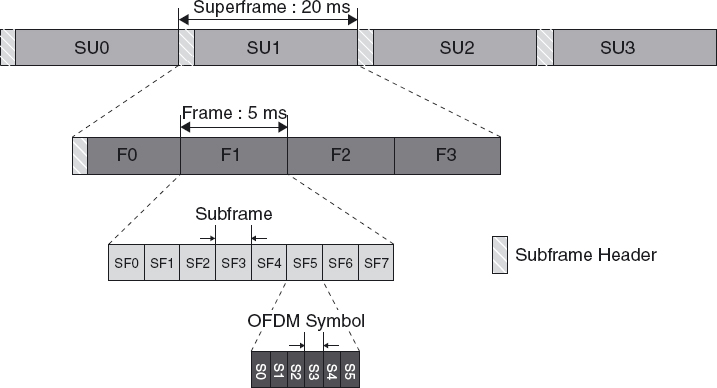Frame Structure in IEEE 802.16m
To ensure backward compatibility with the IEEE 802.16-2009 frame structure, the amendment proposes a frame structure that achieves two objectives: legacy support for the Reference System and enable the use of new physical and medium access control layers features. Such features, for example, low latency, are not supported in legacy IEEE 802.16.
Basic Frame Structure
The IEEE 802.16m amendment describes a superframe structure of 20ms that supports both TDD and FDD (both full and half). The superframe begins with the superframe header containing control and management information. For backwards compatibility, the superframe is divided into four equally sized 5 ms frames, each consisting of eight subframes for either DL or UL transmission. This frame structure is shown in Figure 4.7 below.
Three types of subframes are defined: type 1 with six symbols, type 2 with seven symbols, and type 3 with five symbols. These types are applied to both FDD and TDD duplexing schemes, including half FDD MS operation. The TDD frame is designed to have two points to switch from DL to UL and vice versa. The half FDD frame structure is similar to that of TDD in employing transmission gaps for switching between DL and UL transmissions. The half FDD frame differs, however, in the DL and UL being transmitted over two separate frequency bands.

Figure 4.7 IEEE 802.16m basic ...
Get LTE, LTE-Advanced and WiMAX: Towards IMT-Advanced Networks now with the O’Reilly learning platform.
O’Reilly members experience books, live events, courses curated by job role, and more from O’Reilly and nearly 200 top publishers.

